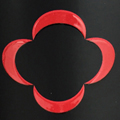Ferreira
by
Terry Sullivan
 Summary: The Ferreira company was established by the Ferreira winegrowing family in 1751; soon afterwards the Douro Valley became a demarcated wine region. In the 1800s Dona Antónia Adelaide Ferreira led the company by expanding vineyard acreage and building wineries. What she accomplished led the company into the 21st century.
Summary: The Ferreira company was established by the Ferreira winegrowing family in 1751; soon afterwards the Douro Valley became a demarcated wine region. In the 1800s Dona Antónia Adelaide Ferreira led the company by expanding vineyard acreage and building wineries. What she accomplished led the company into the 21st century.
 Over two and a half centuries ago, the wine growing family Ferreira began producing port wines. For the first 90 years, the business grew slowly. Then in 1840, at 33 years of age, Dona Antónia Adelaide Ferreira took over the business. She strengthened and expanded the business due in part to her charisma and enterprising spirit. During her tenure, she planted additional vineyards in the Douro Valley, built wineries and created estates that remain to our present time. Dona Antónia Adelaide Ferreira became affectionally known as “Ferreirinha” or “little Ferreira.”
Over two and a half centuries ago, the wine growing family Ferreira began producing port wines. For the first 90 years, the business grew slowly. Then in 1840, at 33 years of age, Dona Antónia Adelaide Ferreira took over the business. She strengthened and expanded the business due in part to her charisma and enterprising spirit. During her tenure, she planted additional vineyards in the Douro Valley, built wineries and created estates that remain to our present time. Dona Antónia Adelaide Ferreira became affectionally known as “Ferreirinha” or “little Ferreira.”
The company’s 500 hectares (1,236 acres) of vineyards are in the Douro Valley as are the wineries that produce the port. Wine is then transported to the Ferreira cellars in Vila Nova de Gaia where it ages. The 18th century building that houses the museum rooms and cellars was once owned by a monastery, thus the cross over the entrance. The monastery used the building for storage.
 Wine tourists can enjoy a museum-like tour of the rooms and cellars. Cement vats line the walls of the reception area. Vats are numbered with a plaque that has the number of liters of capacity. In the cellar, cigar-shaped wood barrels and wood vats line the walls and spaces. The floor is made from wood blocks. Temperature and humidity are not machine controlled. During the summer, the wood block floor may have water sprayed on it to control the humidity.
Wine tourists can enjoy a museum-like tour of the rooms and cellars. Cement vats line the walls of the reception area. Vats are numbered with a plaque that has the number of liters of capacity. In the cellar, cigar-shaped wood barrels and wood vats line the walls and spaces. The floor is made from wood blocks. Temperature and humidity are not machine controlled. During the summer, the wood block floor may have water sprayed on it to control the humidity.
 One stop that we made showed a relief map of the Douro Valley. On the map were marked the vineyards and wineries that Ferreira owns. A room highlights the past with photos and artifacts from by-gone eras. Barrel making tools are displayed along with barrels showing the barrel making process. In early years, harvesters carried baskets of grapes on their shoulders from the vineyard. Be sure to stop by the model of a barco rabelo, a wine barrel ship used to transport the wine from the Douro Valley to Vila Nova de Gaia.
One stop that we made showed a relief map of the Douro Valley. On the map were marked the vineyards and wineries that Ferreira owns. A room highlights the past with photos and artifacts from by-gone eras. Barrel making tools are displayed along with barrels showing the barrel making process. In early years, harvesters carried baskets of grapes on their shoulders from the vineyard. Be sure to stop by the model of a barco rabelo, a wine barrel ship used to transport the wine from the Douro Valley to Vila Nova de Gaia.
Along with the many items on display, there is a copper still. Ferreira distills wine and makes brandy. Much of the brandy used to halt fermentation for port production is distilled by Ferreira.
Enjoy a short walk from the cellar to the wine tasting building. You will pass a sculpture of a lesser rhea. This bird is the port house’s logo. It symbolizes elegance and never stepping backwards.
Tasting Facility
 The tasting room is in a stone building. A large area has picnic-style benches and seats for people to taste the ports. We were invited to a private room for the tasting. The room’s walls were covered with blue, white and shades of yellow tiles depicting various scenes. One scene shows workers pressing grapes in a lagar. Another shows the image of Dona Antónia Adelaide Ferreira and the family’s coat of arms.
The tasting room is in a stone building. A large area has picnic-style benches and seats for people to taste the ports. We were invited to a private room for the tasting. The room’s walls were covered with blue, white and shades of yellow tiles depicting various scenes. One scene shows workers pressing grapes in a lagar. Another shows the image of Dona Antónia Adelaide Ferreira and the family’s coat of arms.
 We tasted four ports. The Dona Antónia Reserva Branco was a white port with 20% alcohol and 120 g/L of residual sugar. The amber colored wine was made from Malvasia Fina, Códega, Viosinho, Rabigato, and Arinto grapes. The final blend had an average age of seven years of aging in 640-liter wood barrels. The aroma was reminiscent of dried yellow fruits. The silky mouthfeel had the taste of dried apricots. The finish was fresh with a long aftertaste of dried fruit. You can enjoy the wine as an aperitif or paired with soufflés, pâtés and desserts.
We tasted four ports. The Dona Antónia Reserva Branco was a white port with 20% alcohol and 120 g/L of residual sugar. The amber colored wine was made from Malvasia Fina, Códega, Viosinho, Rabigato, and Arinto grapes. The final blend had an average age of seven years of aging in 640-liter wood barrels. The aroma was reminiscent of dried yellow fruits. The silky mouthfeel had the taste of dried apricots. The finish was fresh with a long aftertaste of dried fruit. You can enjoy the wine as an aperitif or paired with soufflés, pâtés and desserts.
The Twenty Year Old Tawny Dugue de Bragança had a translucent red color with a ruby hue. The 20% alcohol port was crafted with Touriga Franca, Touriga Nacional, Tinta Barroca, Tinta Roriz, Tinto Cão and Tinta Amarela grapes. The port had 118 g/L of residual sugar. The aroma was floral with dried fruits and a hint of alcohol. The taste had a velvety mouthfeel and had dried black raspberries, dried cherries, nuts, honeysuckle and violet notes. The finish was fruity, nutty and floral. Use this port as an aperitif or paired with cheeses, dumplings, seafood, apple pie and nuts.
The 2015 Vintage was from a single vineyard Quinta do Porto. The port had 20% alcohol and 101 g/L of residual sugar. The opaque dark purple to black colored port was made from a blend of Touriga Nacional, Touriga Franca, Vinha Velha, Tinta Roriz, and Sousão grapes. Dried cherries were noted on the aroma. The taste had a very soft mouthfeel, accompanied by dried cherries and dried blueberries. Tannins were also noticed. The finish was fruity with a touch of alcohol burn. This port can age in the bottle for another one to two decades. Pair the port with chocolate covered cherries.
 The Ten Year Old White Port had an orange color with brown hue. The 20% alcohol port was made with Malvasia Fina, Códega, Rabigato, and Gouveio grapes. The port had 134 g/L of residual sugar. The aroma had flowers and dried yellow fruits, notably violets, honeysuckle and dried apricots. The taste had a velvety mouthfeel and offered almonds, dried apricots and honeysuckle. The finish of dried fruits, nuts and flowers was delicious. You can use this port as an aperitif or paired with strong cheeses and rich desserts such as crème brûlée.
The Ten Year Old White Port had an orange color with brown hue. The 20% alcohol port was made with Malvasia Fina, Códega, Rabigato, and Gouveio grapes. The port had 134 g/L of residual sugar. The aroma had flowers and dried yellow fruits, notably violets, honeysuckle and dried apricots. The taste had a velvety mouthfeel and offered almonds, dried apricots and honeysuckle. The finish of dried fruits, nuts and flowers was delicious. You can use this port as an aperitif or paired with strong cheeses and rich desserts such as crème brûlée.
Ferreira has an interesting history of strong leadership. Visitors can enjoy the cellars and displays of winemaking equipment. Tastings are relaxed and informative. Discover the port producer with the slogan Foi você que pediu? Was it you who ordered?
Ferreira
Avenida Diogo Leite 70, 4440-452
Vila Nova de Gaia, Portugal
Article written April 2018.
Please support the following.
 |
||||
|
Portugal |
Spain and Portugal |
SmoothRed London, England, United Kingdom |

